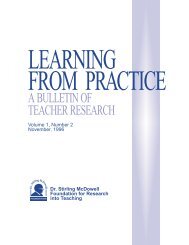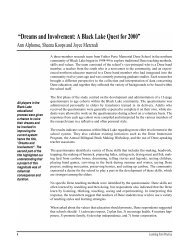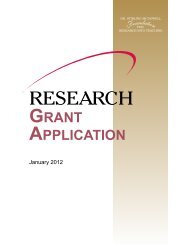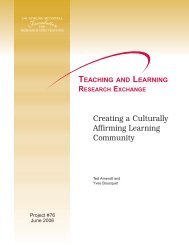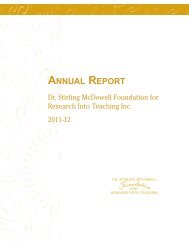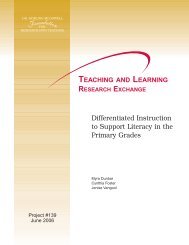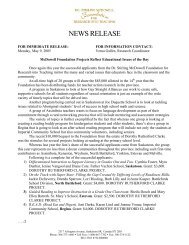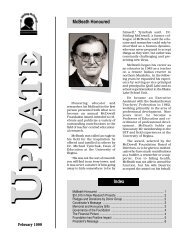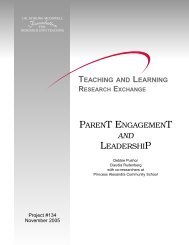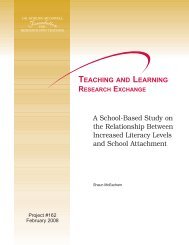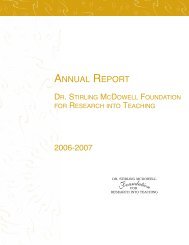Guided Reading Strategies to Improve Students - Dr. Stirling ...
Guided Reading Strategies to Improve Students - Dr. Stirling ...
Guided Reading Strategies to Improve Students - Dr. Stirling ...
- No tags were found...
Create successful ePaper yourself
Turn your PDF publications into a flip-book with our unique Google optimized e-Paper software.
Researcher ReflectionsWhat did the researchers learn from collaborating on this project?The researchers maintained reflection journals throughout the project. Thefollowing insights are drawn from their unpublished journals for the 2006/2007school year.• The project proved <strong>to</strong> me we are good <strong>Reading</strong> teachers willing <strong>to</strong> learn newstrategies <strong>to</strong> improve and build on what we are already doing everyday in ourclassrooms.• Perhaps our greatest resource for teaching <strong>Reading</strong> already exists in ourschool… the knowledge that we all have in teaching <strong>Reading</strong>.• I do believe that critical and creative thinking can be taught – just <strong>to</strong> themind that is developed and ready for it.• Some children were excellent readers; but were not comfortable or confidentin creative or critical thinking. They appeared <strong>to</strong> be better at learning factualinformation rather than using personal judgment or taking guesses atthings.• It is important that each teacher collect his/her own data with each childwhen screening the children.• Having release time <strong>to</strong> assess students and <strong>to</strong> meet with the otherresearchers was very beneficial.• It is time consuming <strong>to</strong> organize <strong>Guided</strong> <strong>Reading</strong> initially – creating units,gathering materials and determining student groupings.• One highlight of this project was <strong>to</strong> visit Sacred Heart School in Regina.• The opportunity <strong>to</strong> discuss resources, benchmarks, screens, M.I.R. (MajorIntegrated Resources) and assessments was in itself invaluable.• To see the before, during and after posters hanging in the classroomsand being used was an affirmation of the many years I spent on theSaskatchewan Learning K-5 ELA renewal team.• Because of the visit, all my fears of how <strong>to</strong> implement this strategy werealleviated and I have the confidence <strong>to</strong> immerse my class in<strong>to</strong> it.• I’m finding resources more readily now.• The use of technology <strong>to</strong> measure comprehension skills, and specifically theability <strong>to</strong> inference was a valuable <strong>to</strong>ol that not only kept the studentsmotivated, and provided immediate feedback; but created diagnosticprin<strong>to</strong>uts that could be used <strong>to</strong> inform teaching practices as well.• The kinds of questions I ask now are more open-ended, and encouragestudents <strong>to</strong> dig deeper, and think more critically.• The process of learning about the theory of <strong>Guided</strong> <strong>Reading</strong> strategieswith the other researchers and implementing a <strong>Guided</strong> <strong>Reading</strong> program wasan exciting one.26 RESEARCH REPORT: <strong>Guided</strong> <strong>Reading</strong> <strong>Strategies</strong> <strong>to</strong> <strong>Improve</strong> <strong>Students</strong>’ Critical Thinking Skills in Grades Three, Four and Five



